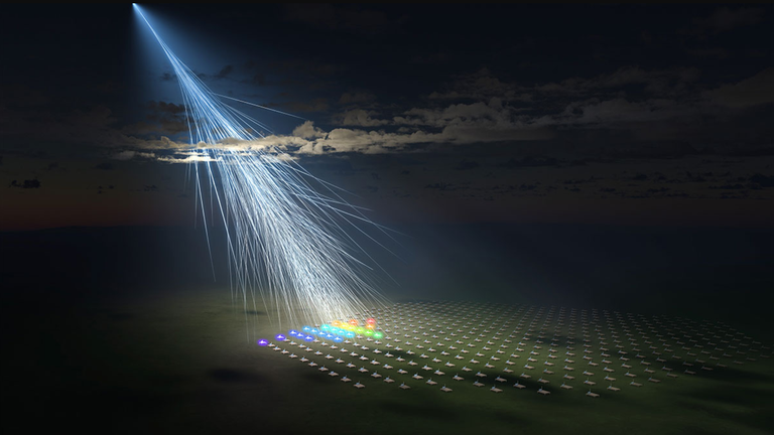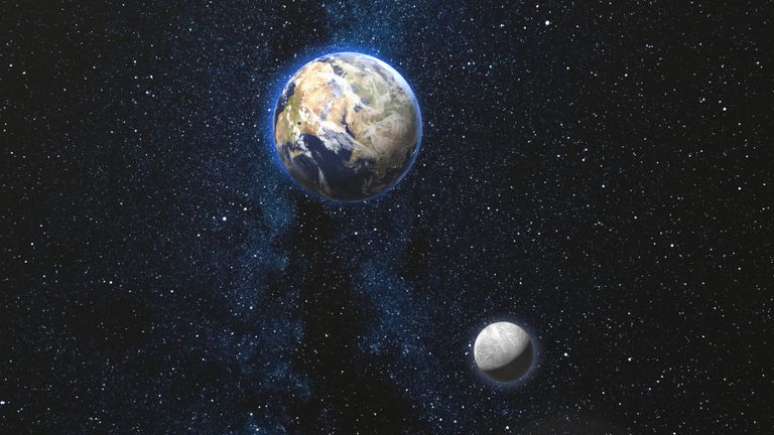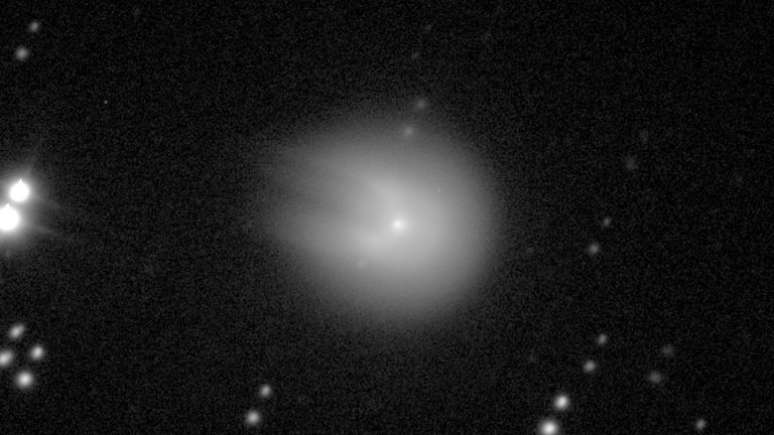Discover the top space news of the week from November 18 to 24, 2023 and stay up to date on everything that matters most in the world of astronomy!
The last week has been busy for space science. Look at it: The second flight test of the Starship rocket took place, which ended in an explosion and provided very important data for future launch attempts. In addition, there was also the discovery of a particle so energetic that it does not appear to come from any known physical phenomenon.
These topics give you a taste of what to expect from our weekly roundup of the latest astronomy news.
To know more:
Spaceship rocket explosion
After much waiting, it was last Saturday (18th) that the SpaceX done the new flight test with the Starship rocket. The Super Heavy Propellant and Starship prototypes, the spacecraft itself, launched together during the morning and separated a few minutes later.
Watch Starship’s second integrated flight test → https://t.co/bJFjLCiTbK https://t.co/cahoRQ72lm
— SpaceX (@SpaceX) November 18, 2023
Everything seemed to be going well, but shortly after the separation of the stages, the Super Heavy exploded. The spaceship continued its journey, but SpaceX lost contact when it was at 148 km altitude. The data obtained will help the company apply improvements to upcoming flight tests, which do not yet have a date.
Amaterasu, the ultra energetic particle
Scientists from Osaka Metropolitan University and Utah discovered an intriguing particle. She has been nicknamed Amaterasu (after the sun deity in Japanese mythology) and, alone, is a million times more energetic than the energy produced in particle accelerators.

Amaterasu was identified in 2021 through the Telescope Array experiment and its origin is unknown for now. For one of the researchers, it may have been accelerated by some intense event, such as a gamma-ray burst, or perhaps by some physical phenomenon still unknown to science.
Explosion of objects on Jupiter
A Japanese amateur astronomer recorded a bright light on Jupiter. There is no mystery in this phenomenon: according to Heidi Hammel, one of the scientists on the James Webb telescope team, “the bright flash was a fireball, a shooting star in Jupiter’s atmosphere.”
昨晩の木星閃光のGIF動画です. pic.twitter.com/4DC1lFguoi
— 鈴木邦彦 (@kunihiko_suzuki) November 16, 2023
This isn’t the first time something like this has happened in the gas giant, and it won’t be the last. As the most massive planet in the Solar System, Jupiter has such a strong gravitational pull that it ends up catching unfortunate objects traveling through space, which end up colliding with its clouds.
Moon closest to Earth
Maybe you’ve heard that the The Moon has reached perigee, the closest point to Earth, this week. When this happens, our natural satellite comes closer to us: in this case, the Moon is 369,818 km away, with an average distance between it and the Earth of 384,400 km.

The closer proximity is temporary and occurred because the Moon orbits the Earth in an elliptical (oval) trajectory. This means that sometimes it comes closer to us, sometimes it moves away. After perigee, the Moon will reach its apogee (farthest point from Earth) in December.
The “Devil’s Comet” has a new eruption
Comet 12P/Pons-Brooks (or simply 12P) suffered its fourth eruption on November 14, the strongest recorded so far. This time, the explosion was so intense that it made the comet 100 times brighter, and after the event, the coma (the gaseous envelope around the comet’s nucleus) changed shape.

Therefore, 12P appears to have lost the elongated structures in its coma that gave it the nickname “devil’s comet.” Additionally, astrophotographers have noticed that it now has a greenish color caused by dicarbon molecules.
Sonification of the Milky Way
A new one The sonification was carried out starting from photos of the center of the Milky Way. The images were captured by the Hubble, Spitzer and Chandra telescopes, revealing star systems, several filaments and the region where the supermassive black hole Sagittarius A* is located.

With sonification these data were transformed into sounds. The result is a three-part composition whose sounds reveal stars, compact fountains and other objects at the heart of our galaxy.
Trends on Canaltech:
- The model created by AI earns up to R$50,000 per month in Spain
- Round 6: The Challenge | The Brazilian denounces real-life sexual abuse and manipulation
- Ayrton Senna had a collection of incredible cars
- 🔥 Galaxy Watch 4 is at a great price on KaBuM! this Black Friday
- The hole in the ozone layer does not regenerate
- Motorola confirms which mobile phones will receive Android 14
Source: Terra
Rose James is a Gossipify movie and series reviewer known for her in-depth analysis and unique perspective on the latest releases. With a background in film studies, she provides engaging and informative reviews, and keeps readers up to date with industry trends and emerging talents.







